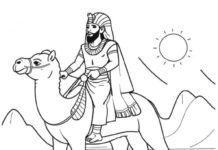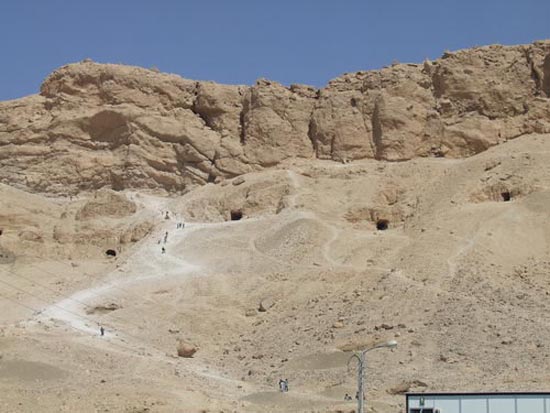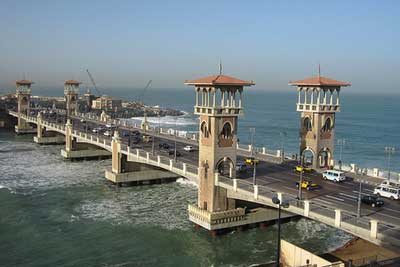Are you seeking the extraordinary adventure of a lifetime? An adventure that immerses in the mysteries of pharaohs and ancient wonders to explore the wonders of ancient Egypt. If you’re a history enthusiast or simply seeking a unique vacation, in one of the wonders of the world, a “Valley of the Kings holiday” might be the perfect choice for you that can captivate your imagination. This enchanting destination, nestled on the east bank of the Nile River in Luxor, Egypt, is one of the most famous traveling archaeological sites in the world. In 1979, it became a UNESCO World Heritage Site that has long been a focal point of fascination for historians, archaeologists, and curious minds alike. It beckons all to explore its ancient wonders.
This article will take you on a journey through time and history, exploring the captivating Valley of the Kings in Egypt. An adventure offering a thrilling adventure that combines rich history, mysteries, archeological marvels, and breathtaking landscapes of this incredible destination. Also, we will delve into the legacy, and the stories that make this site an absolute marvel. In this comprehensive guide, we will take you on a virtual tour of the Valley of the Kings, sharing insights and tips for a remarkable vacation.

The Valley of the Kings in Egypt, stands as an archaeological wonder, and a testament to the grandeur of the ancient civilization, is a treasure trove of history, secrets, and enigma.
The Enigmatic Valley-of-the-Kings Egypt: An Introduction
Valley of the Kings is a magnificent, is an ancient desert valley burial ground located near the historical city of Luxor on the western banks of the Nile River in Egypt. It was in use for a period of nearly 500 years spanning from the 16th to 11th century BC approximately 1539-1075 BC. It was here that tombs were constructed for the remains of Pharaohs and powerful nobles of the New Kingdom, preserving their legacy for eternity.
Table of Contents
- Introduction: The Enigmatic Valley-of-the-Kings Egypt
- A Glimpse into History: The History of the Valley-of-the-Kings Egypt
- Tombs and Treasures: What Lies Beneath
- Exploring the Valley: A Journey of Discovery
- The Great Pharaohs: Famous Residents of the Valley
- Hieroglyphics Unveiled: The Language of the Ancients
- Valley of the Kings Today: A Modern-Day Adventure
- The Curse of the Pharaohs: Myth or Reality?
- Visiting Tips: How to Make the Most of Your Trip
- Souvenirs and Mementos: What to Bring Back
- Accommodations: Where to Rest After an Exciting Day
- Frequently Asked Questions
2-A Glimpse into History: The History of the Valley-of-the-Kings Egypt
The history of the Valley of the Kings is rich and deeply intertwined with the grandeur of the Egyptian civilization particularly during the New Kingdom period, which covers the 18th to the 20th dynasties (approximately 1550-1070 BCE).
It all began during the 18th dynasty when Pharaoh Thutmose I (c. 1493–1481 BCE) chose this desolate valley as a royal burial ground, shifting away from traditional massive pyramid construction as their tombs such as the ones at Giza. Due to various factors which led to the creation of the Valley of the King including tomb robbers. The natural rock formations and remote location made it an ideal hiding location for the tombs of Egypt’s elite, as a secure way to protect their treasures and the afterlife. The valley was planned to house tombs that would be less conspicuous and could be better protected from tomb robbers.
As time passed, the valley grew in significance. The Valley of the Kings was used as the burial site for numerous pharaohs, their consorts, and high-ranking officials. Some of the most famous tombs include those of Tutankhamun, Ramses II, Seti I, and Hatshepsut.
The Valley of the Kings is known to contain 63 tombs and chambers (ranging in size from a simple pit to a complex tomb with over 120 chambers). The only entrance to this place was a long narrow winding path. This was a secret place even for desert traveling passengers, where sentries were placed at the entrance of the valley kings, as well as along the top of the hills, in the hopes of discouraging tomb robbers.
Despite all this and despite the efforts to make the tombs secure, almost all of the tombs seem to have been opened and robbed. In antiquity including the tomb of Tutankhamun’s (that was discovered almost intact in 1922 by Howard Carter) though in his case, it seems that the robbers were interrupted, luckily to us, so very little was removed, but they still give an idea of the wealth of information, opulence and treasures, and the power of the rulers of this time.
3- Tombs and Treasures: What Lies Beneath
The Valley of the Kings boasts a collection of magnificent tombs carved into the cliffs, preserving the final resting places of pharaohs. Each tomb tells a unique story, intricately designed, adorned with intricate wall paintings, intricate hieroglyphics, and vivid depictions of the pharaoh’s life, religious rituals, and of the pharaoh’s journey to the afterlife. These elaborately decorated tombs are filled with treasures and inscriptions.
Step into the marvel of the unknown as you unveil the Tombs and unlock the Secrets of the stunning artifacts and priceless treasures that lay within these crypts.
4-Exploring the Valley: A Journey of Discovery
Walking through this historic valley is like stepping back on a time-travel adventure! Valley of the Kings is no ordinary spot, it is rugged terrain, barren yet so captivating place to visit.
Beyond the tombs, the Valley of the Kings offers stunning natural beauty. It’s not just about history; it’s also about the jaw-dropping scenery. Enormous towering cliffs surround the area, creating an amazing dramatic backdrop for your adventure. As you walk among the tombs, you’ll be captivated by the same landscape beauty that once inspired the ancient Egyptians and the stories they hold.
5-The Great Pharaohs: Famous Residents of the Valley
The Valley of the Kings is home to the resting places of the most famous residents in history. Pharaohs in ancient Egypt were a bit like kings, they were much more than just rulers, even more special. They were believed to be like gods, and their tombs in the Valley of the Kings reflect the grandeur and significance of their lives and beliefs of these ancient rulers. Let’s meet some of these famous pharaohs who lived there! Discover their stories, explore their final resting places, and marvel at the grandeur of their burial chambers.
1-The Mysterious Tutankhamun – A Glimpse into the Boy King’s Hidden Treasure:
Undoubtedly, the most famous tomb in the Valley of the Kings. It is known as the crown jewel of the valley, belongs to Tutankhamun, the boy pharaoh, one of the most well-known pharaohs. Discovered by Howard Carter in 1922, remains one of the most famous archaeological finds in history. His tomb was smaller than many others but held a wealth of artifacts. In fact, was nearly untouched by grave robbers. Inside, there were intricate murals, tons of beautiful artifacts, like his shiny gold mask and treasures provide invaluable insights into the life and culture of ancient Egypt.

-
Ramesses II’s Tomb – The Great Pharaoh’s Legacy;
The tomb of Ramesses II, also known as Ramesses the Great, he ruled for a super long, long time – over 66 years! His tomb, where he was buried, was one of the largest in the Valley of the Kings. Its grandeur reflects the power and ambition he had! Ramesses was like a superstar in ancient Egypt. known for his extensive building projects and military conquests. He built huge temples and monuments, and he even led his army to victory in battles. His legacy is one of the most enduring in Egyptian history that’s why his tomb was so fancy. So, he’s definitely a pharaoh to remember!” His mummy can still be visited today.

3-Hatshepsut: The Queen Pharaoh Who Shaped History.
Hatshepsut was a name that shined brightly, leaving an indelible mark on the annals of time. A powerful and remarkable female figure from ancient Egypt who defied convention and became one of the most influential pharaohs in history. In the male-dominated world of ancient Egypt, Hatshepsut proved that being a pharaoh wasn’t just for men! She even dressed like a man to assert her authority. Hatshepsut was incredibly powerful and remarkable. Her temple called the sanctuary at Deir el-Bahri is a masterpiece of ancient Egyptian architecture that stands as a testament to her vision and ambition. Hatshepsut’s story is a great example of how anyone can achieve their dreams, no matter their gender.

Tomb of Seti I

4-Seti I’s Tomb – A Masterpiece of Ancient Art.
This pharaoh was known for his impressive military campaigns and his beautifully decorated tomb. Seti I’s tomb is a true masterpiece of ancient Egyptian art. The walls of his tomb are adorned with intricate hieroglyphs and paintings of breathtaking beauty to showcase his accomplishments. It is a must-see for anyone exploring the Valley of the Kings. Seti I’s tomb was an ode to the pharaoh but also a gateway to understanding the spiritual beliefs and customs of ancient Egypt.

Ramses III, Ancient Egyptian Pharaoh
5-Ramses III The Warrior Pharaoh Defending Egypt’s Glory:
He was a warrior pharaoh of the New Kingdom in ancient Egypt who fought off invaders and maintained peace and stability within its borders. His mortuary temple at Medinet Habu is a massive structure with intricate decorations and hieroglyphic texts, emphasizing the pharaoh’s journey to the afterlife and his divine role as a ruler. These pharaohs ruled thousands of years ago. Today, they offer us a glimpse into the fascinating world of ancient Egypt and the incredible history and culture they represent.

Ramses IV’s tomb in the Valley of the Kings
6-Hieroglyphics Unveiled: The Language of the Ancients
As you explore deeper into the Valley, you’ll come across the enigmatic hieroglyphics that adorn the tomb walls of ancient tombs. These ancient Egyptian symbols and fancy pictures are to understand the past. An enduring testament to the ingenuity of ancient Egyptians. Their intricate system of writing tells stories of the pharaohs, their achievements, and their journey into eternity. Provided us with invaluable insights into the civilization’s history and beliefs. Witness the artistry within incredible skill and creativity and mastery of communication in this mesmerizing script.
7-Valley of the Kings Today: A Modern-Day Adventure
The Valley of the Kings is divided into two: the west and the east valley. The east valley is more famous and attracts more visitors to it, as it has most of the tombs in the new kingdom. The West Valley has only one remote tomb open to the public, that of Tutankhamun’s successor the tomb of Ay.)
These tombs were constructed with meticulous planning and architectural prowess, with intricate tunnels, special burial chambers, and chambers for storing the deceased’s belongings. Archaeologists have uncovered more than 60 tombs in the valley. These tombs vary in size and complexity. Some tombs may not be as lavishly decorated as others. The Valley of the Kings also had tombs for the favorite nobles and officials, and even the wives and children of both the nobles and pharaohs. These tombs provide valuable insights into the social structure and customs and a unique perspective on the afterlife beliefs and burial practices of ancient Egypt.

The Valley of the Queens
Around the time of Ramses I (ca. 1300 BC) the Valley of the Queens was begun, although some wives were still buried with their husbands.
John Gardiner Wilkinson first established the present numbering system, in 1827, as part of his preparation of a map (valley of the king’s map) of Thebes. Wilkinson’s is not the only system of tomb designation that has been used in the Valley though, is the only system that is still in use. Several traveling explorers assigned numbers, letters or descriptive labels to the tombs. All the tombs are not open all the time. Some are only used for special occasions and some of them are closed for restoration by the government. These tombs have undergone many changes in the past 500 years.
Now, visitors can now explore its mysteries and beauty. There are modern amenities like visitor centers, guided tours, and interpretive displays to help make this journey accessible to all.
8-The Curse of the Pharaohs: Myth or Reality?
When exploring the historic treasures of Egypt, one cannot discuss the Valley of the Kings without mentioning the infamous “Curse of the Pharaohs.” Legend warns of dire consequences for those who disturbed the eternal slumber of the pharaohs by entering their tombs. This curse is said that they would face a terrible curse, leading to illness, misfortune, or even death.
While this curse has captured the imagination worldwide, and been the plot of numerous books and movies, a product of historical context, sensationalism, and superstition. There is no scientific evidence to support its existence. The curse is now largely considered a tragic events associated with it can be explained by natural causes and remains an intriguing part of the valley’s lore.
9-Visiting Tips: How to Make the Most of Your Trip
In this comprehensive guide, we will provide you with valuable tips to make sure your visit to the Valley of the Kings is an unforgettable experience and enjoyable experience.
- Plan Ahead: To make the most of your trip, research the opening hours, ticket prices and any special events or exhibitions that may be taking place during your visit. The official website of the Valley of the Kings is a valuable resource for up-to-date information.
- Guided Tours: While you can explore the Valley of the Kings independently, hiring a professional guided tour to get in-depth insights into the history and significance of each tomb.
- Best time to visit; The cooler months, from November to February matter very much to avoid the scorching heat of summer which can be quite intense. Early mornings are too, to avoid crowds or late afternoons are the ideal times to explore the tombs.
- Comfortable Footwear: Wear comfortable shoes are also essential for exploring the rocky terrain.
- Stay Hydrated carry plenty of water to stay hydrated. Sunscreen, and a hat, as Egypt’s climate can be unforgiving,
- Safety First: Navigating the Valley Securely; While the Valley of the Kings is a remarkable destination, it’s important to stay safe during your visit. Follow the guidance of tour guides to ensure a secure and enjoyable adventure.
- Photography: Photography is allowed to capture the magic but be aware of restrictions on photography in some tombs but be mindful of the flash as it can deteriorate the ancient colors and paintings. Consider bringing a good quality camera to capture the intricate details.
10-Souvenirs and Mementos: What to Bring Back
Don’t forget to pick up a few mementos when you visit the mesmerizing Valley of the Kings, one of the most iconic archaeological sites in Egypt to remember. Such as Exquisite Handcrafted Statues, Papyrus Artworks, Jewelry with a Historical Twist, Authentic Egyptian Textiles, Traditional Alabaster Products, and Unique Hieroglyphic Artifacts. This array of pieces of this historic wonderland souvenirs, will make your experience truly unforgettable and remain in your heart and your home.
11-Accommodations: Where to Rest After an Exciting Day
After a day of exploration, you’ll need a comfortable place to rest. Nearby cities like Luxor offer a variety of accommodations, from luxurious hotels to charming guesthouses. Choose one that suits your preferences and budget and savor the Egyptian hospitality.
12-Frequently Asked Questions
Can I visit the Valley of the Kings year-round?
Yes, the Valley is open to tourists year-round. You can explore the tombs and the mesmerizing history they hold but the best time to visit is during the cooler months, from October to April.
How Do I Get to the Valley of the Kings?
Most visitors arrive in Luxor, and from there, by boat or car it’s a short distance to the Valley. You can choose between guided tours or exploring independently.
Is Photography Allowed Inside the Tombs?
Photography is generally not allowed inside the tombs to protect the delicate ancient paintings and artifacts. But is allowed in some tombs but be mindful of the flash. It’s best to check with your tour guide for specific rules.
Are there any age restrictions for visiting the Valley of the Kings?
There are no specific age restrictions, however, some tombs may not be suitable for young children due to steep stairs. Consider the heat and walking though the rugged terrain when traveling with young children or elderly individuals.
Are the Tombs Still Intact?
Yes, many of the tombs are remarkably well-preserved. The artwork and hieroglyphics inside are as vivid as they were millennia ago.
So, are you ready to embark on a Valley of the Kings holiday? It’s a journey that will transport you back in time, where history and adventure meet on the banks of the Nile.Remember that an effort has been made to save the royal mummies from destruction and to salvage the remaining treasures of the royal tombs is done. Because of the symmetry and the beauty that the tomb holds, traveling visitors find it extremely difficult to make a choice of entering the tomb. Since they are so many in numbers, yet having their own uniqueness, that it becomes almost impossible to cover all of them. The style of the tombs did undergo changes throughout the New Kingdom, don’t miss the opportunity to explore this extraordinary destination, and try to see examples from the span of 500 years that the hidden valley kings was in use.














































